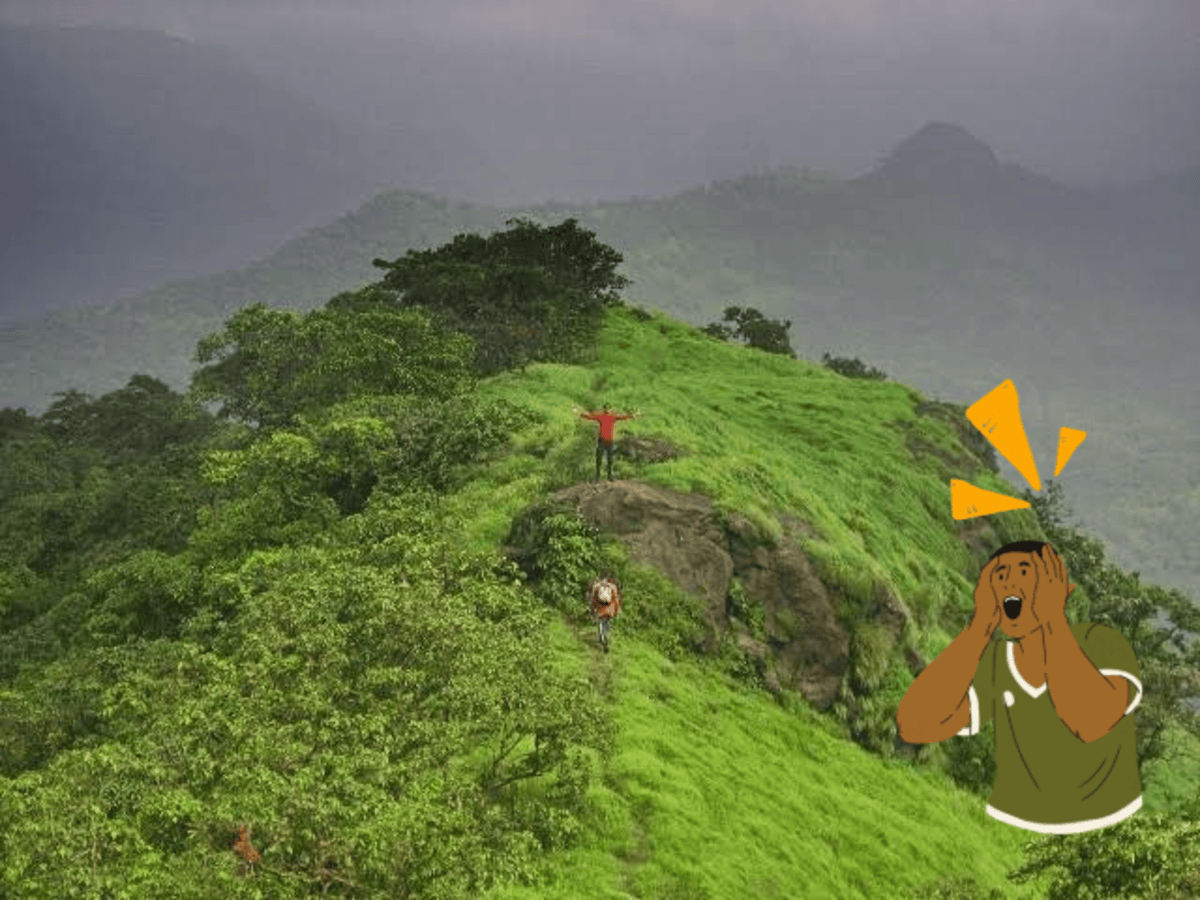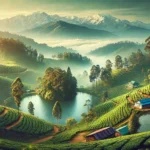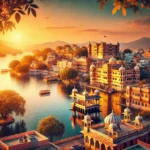Discover the 6 shocking realities of Songiri Fort, a hidden gem in Maharashtra. Learn about its historical significance, trekking difficulty, scenic views, and essential tips to plan your visit effectively.
Table of Contents
Introduction
Nestled in the Sahyadri range of Maharashtra, Songiri Fort offers a unique blend of history and nature. Unlike the more famous forts in the region, Songiri remains relatively unknown, drawing only the most adventurous of trekkers.
But is it truly a hidden gem or an overrated spot? In this blog, we reveal the 6 shocking realities of Songiri Fort, including its historical importance, trekking challenges, and essential visitor tips.
Whether you’re a history enthusiast, a nature lover, or a trekking aficionado, this guide will help you decide if Songiri Fort should be on your travel list.
1. Songiri Fort’s Overlooked History – A Hidden Gem or Forgotten Relic?
Historical Significance
Songiri Fort, also known as Sondai Fort, is one of the many forts built during the Maratha era in Maharashtra. It was primarily used as a watchtower to protect the trade routes and nearby villages.
However, it lacks the grandeur of other forts like Rajgad or Raigad and, as a result, is often overlooked by mainstream tourists.
- Did You Know? The fort has seen minimal renovations, so it retains much of its original charm, offering visitors an authentic glimpse into the past.
- Downside: The lack of well-preserved structures may disappoint those expecting elaborate fortifications or architectural wonders.
Why Visit? For history lovers, Songiri Fort offers an intimate look into the Maratha defense systems, minus the touristy crowds. It’s ideal for those who enjoy exploring offbeat historical locations.
2. Trekking Songiri Fort – Scenic or Strenuous?
The Trekking Trail
The Songiri Fort trek is categorized as moderate and is suitable for both beginners and experienced trekkers. The trail, which is about 3 kilometers long, takes 2-3 hours to complete.
The journey offers spectacular views of the Sahyadri ranges and lush greenery, particularly during the monsoon season.
- Monsoon Beauty: If you visit during the monsoon, you’ll be treated to beautiful waterfalls, mist-covered hills, and vibrant landscapes. However, be prepared for slippery trails.
- Best Time to Visit: The months from June to September are ideal for trekking when the area is covered in greenery.
Challenges: Though the trek is relatively short, it can be physically demanding due to the steep incline and rough terrain, especially during the rainy season. Proper footwear and gear are highly recommended.
Trekking Tips:
- Carry sufficient water as there are no stalls or vendors along the way.
- Wear sturdy shoes with good grip to handle the rocky and potentially slippery paths.
- It’s advisable to start early in the day to avoid the midday heat and complete the trek in daylight.
3. Unspoiled Natural Beauty – Serene or Isolated?
Scenic Views from the Summit
Once you reach the top of Songiri Fort, you’re rewarded with panoramic views of the surrounding Sahyadri hills and valleys.
The view is particularly breathtaking during the monsoon, when the region comes alive with greenery and mist. It’s the perfect spot for nature lovers and photographers alike.
- Photographer’s Paradise: The expansive landscapes, valleys, and distant mountain peaks provide excellent opportunities for photography.
Potential Drawback: Some visitors might find the fort’s isolation overwhelming. Unlike other more popular trekking spots, Songiri Fort remains relatively quiet, with few other trekkers.
While this ensures solitude, it might feel too isolated for those who prefer more lively trekking experiences.
Songiri Fort Trekking Guide – Find detailed trekking routes, tips, and best times to visit Songiri Fort.
4. Lack of Tourist Infrastructure – A Raw Experience or Missed Opportunity?
Infrastructure Issues
One of the most significant drawbacks of Songiri Fort is the lack of basic facilities for tourists. There are no paved paths, signboards, or nearby food stalls, so visitors must be well-prepared before setting out.
While this gives the fort a raw, unfiltered charm, it can also be inconvenient for those accustomed to more developed tourist destinations.
- No Washrooms or Shelters: Visitors should note that there are no washrooms or places to rest once they start the trek, so it’s essential to plan ahead.
Positive Spin: If you enjoy rugged, undeveloped natural environments, you’ll appreciate Songiri Fort’s untouched appeal. The lack of commercialization allows for a more authentic connection with nature.
5. Preservation of the Fort – Authentic or Neglected?
Current Condition
Unlike the well-maintained forts of Maharashtra, Songiri Fort has not undergone significant preservation efforts. While some parts of the fort are still standing, most of the original structure has deteriorated over time.
There are no information boards or guides to provide historical context, so visitors need to rely on their own research to fully appreciate the significance of the fort.
- Pro: This lack of restoration allows visitors to see the fort in its original state, offering a raw and authentic experience.
- Con: If you’re looking for a more informative and well-preserved historical site, Songiri Fort might leave you feeling disappointed.
6. Essential Tips for Visiting Songiri Fort – What You Must Know
How to Reach Songiri Fort
By Road: Songiri Fort is located approximately 70 kilometers from Pune and can be reached by private vehicle or bus. The closest village is Sonavale, from where the trek begins.
- Nearest Railway Station: The nearest railway station is Talegaon which is around 30 kilometers away from the fort.
- By Public Transport: Buses are available from Pune to Talegaon, from where you can hire a local taxi to reach the base village.
Visitor Tips:
- Carry Snacks and Water: Since there are no food stalls, it’s advisable to carry sufficient food and water.
- Wear Comfortable Clothing: Given the steep climb and rough terrain, light and breathable clothing is recommended.
- Avoid Monsoon Rush: Though the monsoon season offers the best views, the trail can become slippery, making it a bit more challenging for beginners.
- Start Early: It’s recommended to start the trek early in the morning to avoid the afternoon heat and complete the trek in daylight.
Maharashtra Tourism Official Website – For more information on other forts and attractions in Maharashtra.
Final Verdict – Is Songiri Fort Worth the Visit?
Songiri Fort offers a mix of solitude, raw beauty, and historical charm. For seasoned trekkers and history buffs, it’s a hidden gem with plenty to explore. However, for those seeking well-developed tourist spots with plenty of facilities, Songiri Fort may feel a bit lacking.
Ultimately, whether Songiri Fort is a must-visit or overrated depends on your personal preferences. If you enjoy offbeat adventures, scenic treks, and don’t mind the absence of tourist infrastructure, it’s definitely worth the trip!
Conclusion:
In the end, Songiri Fort is a peaceful retreat away from the bustling crowds, offering trekkers and explorers a glimpse into Maharashtra’s lesser-known history.
If you’re ready to tackle the challenges of a raw, unspoiled trek with few amenities but rewarding views, this fort may just surprise you.
Also Read Other Articles On Forts : 5 Mistakes to Avoid When Visiting Dategad Fort








1 thought on “6 Shocking Realities of Songiri Fort – A Must-Visit or Overrated?”